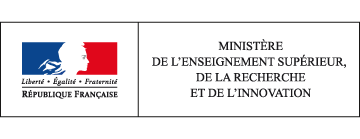01 education expenditure on tertiary education
The nation spent €30.1 billion (€bn) on tertiary education in 2015. This is 2.6 times more than in 1980 (in constant euros). The contribution by central government represented 67.9% of that amount. In 2015, average expenditure per student stood at €11,680, or 40% more than in 1980 (in constant euros).
In 2015, the nation (central government, local authorities, other public administrative bodies, households and companies) dedicated €30.1 billion to tertiary education, a rise of 0.2% over 2014 (at constant prices). Since 1980, expenditure on tertiary education has seen strong growth of 2.7% per year on average. Its share of domestic education expenditure (DEE) increased from 15.1% in 1980 to 20.3% in 2015 (table 01.01).
Over the whole period, DEE on tertiary education was multiplied by 2.6 in constant euros (chart 01.02). Despite this significant increase, average expenditure per student rose by only 40% due to a doubling of student numbers. Over the same period, average expenditure per secondary school pupil increased by 65.9%. Over the period 2006-2009, when there was both a rapid increase in DEE and a slowdown in student enrolment, expenditure per student increased by 3.5% on average per year. Since 2009, however, the slowdown in DEE combined with a new rise in the student numbers has resulted in a drop in spending per student of 0.5% annualy 1.
Average expenditure per student stood at €11,680 in 2015 (chart 01.03). Although it may be difficult to compare the cost of different curricula directly, especially since research expenditure is included in the university totals, there are considerable differences from one branch of study to another. The cost varies from €10,390 euros per year for a university student to €15,100 for a pupil in a class preparing for admission to Grandes Ecoles (CPGE). However, in recent years, the gap between these average expenditure figures has tended to narrow (chart 01.03) but they have diverged again for two years.
More than seventy per cent (73%) of total expenditure goes on staff, especially teachers' wages (44%) (chart 01.04).
In terms of initial funding (see definitions opposite), central government contributes the major share of DEE for tertiary education (67.9%) while local authorities contribute 10.7% and households 9.4% (table 01.01). In terms of final funding, i.e. after including grants in the household budget, the household share practically doubles (17.4%). Some direct or indirect support, funded by the central government and which benefit students or their families, do not appear in the DEE for tertiary education: these are related to taxation (increase in family quotient) or are not directly linked to student status (social housing benefit). If they were included (excluding social welfare payments), expenditure per student in 2015 would then increase €11,680 to €12,880.
Jean-Pierre Dalous & Lisa Fratacci
1 Change in expenditure on programmes 150, 231 and 142 of the Inter-ministerial Mission for Research and Higher Education (MIRES) was -0.2% between 2010 and 2011, +1% between 2011, and 2012, +0.9% between 2012 and 2013, +0.0% between 2013 and 2014, and +0.1% between 2014 and 2015 0 (at 2015 prices).
How to cite this paper :
close
Key figures
Whole of France
Whole of France
Whole of France
Whole of France
Whole of France
Whole of France
Whole of France
Whole of France
Whole of France
Whole of France
Whole of France
01.01 Expenditure on higher education
1 This includes Social housing benefit (ALS), the State contribution to Individualised rent subsidy (APL), increase in family quotient, tax reduction for tuition fees.
2 The structure of initial funding in higher education could not be backcasted before 2006.
3 Including the French national research agency (ANR) and the consular chambers (chambers of commerce and industry, chambers of trade, chambers of handicrafts, chambers of agriculture, etc.).
p provisional.
MENESR-DGESIP/DGRI-SIES
You can embed this table to your website or your blog by copying the HTML code and pasting it into the source code of your website / blog:
close
01.02 Comparison of trends in DEE, average expenditure and staff numbers in higher education (index base 100 in 1980, 2054 prices)
Series are backcasted to take into account changes in methodology (see methodology opposite).
p provisional.
MENESR-DGESIP/DGRI-SIES
You can embed this chart to your website or your blog by copying the HTML code and pasting it into the source code of your website / blog:
close
01.03 Trend in average expenditure per student at 2014 prices (1980-2015p)
p : provisional.
MENESR-DGESIP/DGRI-SIES
You can embed this chart to your website or your blog by copying the HTML code and pasting it into the source code of your website / blog:
close
1 « Higher education producers » are economic agents (in the majority of cases, institutions) which carry out education activities.
p Provisional.
You can embed this chart to your website or your blog by copying the HTML code and pasting it into the source code of your website / blog:
close
Related statistical publications
 Note d'information DEPP 16.32 - Près de 7 % du PIB consacrés
Note d'information DEPP 16.32 - Près de 7 % du PIB consacrésà l’éducation - Jean-Pierre Dalous, Lisa Fratacci, Aline Landreau - November 2016

 Les dossiers 206 - Le Compte de l’éducation - Fabienne Rosenwald, Jean-Pierre Dalous, Martine Jeljoul, Aline Landreau, Stéphanie Lemerle - April 2016
Les dossiers 206 - Le Compte de l’éducation - Fabienne Rosenwald, Jean-Pierre Dalous, Martine Jeljoul, Aline Landreau, Stéphanie Lemerle - April 2016 Translation
 Etat de l'enseignement supérieur et de la rechercheL'état de l'Enseignement supérieur et de la Recherche en France n°10 - Avril 2017
Etat de l'enseignement supérieur et de la rechercheL'état de l'Enseignement supérieur et de la Recherche en France n°10 - Avril 201701 - la dépense d’éducation pour l’enseignement supérieur - Jean-Pierre Dalous & Lisa Fratacci






